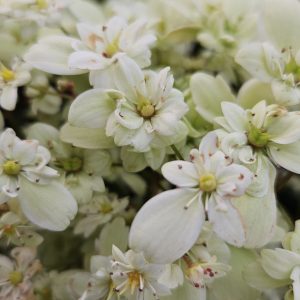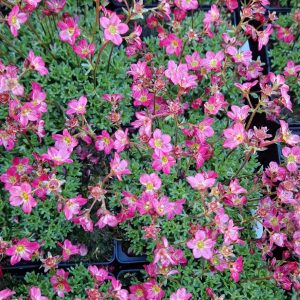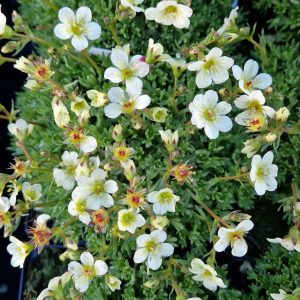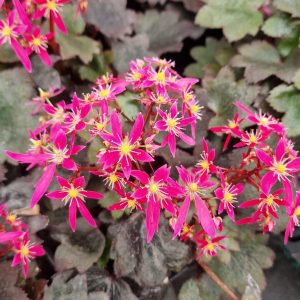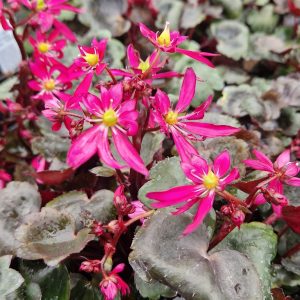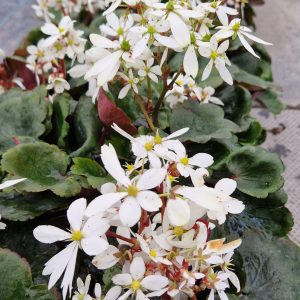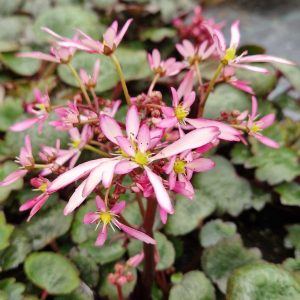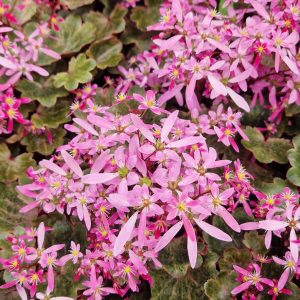Select the right Saxifraga for you.
Choose from the diverse Saxifraga species and cultivars available. Consider factors such as growth habits, flower colours, and suitability to your local climate.
Optimal Planting Time
Plant Saxifraga in early spring or early autumn. These periods allow the plants to establish roots before the heat of summer or the frost of winter.
Choosing the Planting Site
Select a location with well-draining soil. Saxifraga prefers slightly acidic to neutral pH. Ensure the planting area receives partial to full sunlight, though some varieties tolerate shade.
Soil Preparation
Work the soil to a depth of at least 6 inches (15 cm) and amend with organic matter like compost. Well-draining soil is crucial to prevent waterlogged conditions that can harm Saxifraga.
Planting Depth
Dig a hole that accommodates the plant’s root ball, ensuring the crown (where the roots meet the stems) sits at or slightly above the soil surface. Planting too deep can lead to root rot.
Plant Spacing
Space Saxifraga plants according to their mature size. Typically, aim for 6 to 12 inches (15 to 30 cm) apart, allowing enough room for spreading and airflow.
Watering Schedule
Water newly planted Saxifraga thoroughly and consistently to help establish roots. Once established, water as needed, keeping the soil consistently moist but not waterlogged.
Mulching
Apply a layer of organic mulch, such as straw or bark, around the plants. Mulching helps retain soil moisture, suppress weeds, and regulate soil temperature.
Fertilisation
Saxifraga generally doesn’t require heavy fertilisation. Use a balanced, slow-release fertiliser in early spring. Avoid excessive nitrogen, as it can lead to leggy growth.
Deadheading Flowers
Remove spent flowers regularly to encourage continuous blooming and prevent self-seeding, especially if you want to control the spread of certain varieties.
Container Planting
If planting in containers, choose a well-draining potting mix. Ensure the container has drainage holes to prevent waterlogging. Saxifraga in containers may need more frequent watering.
Winter Care
Mulch around Saxifraga plants in late autumn to protect them from extreme cold. However, excessive moisture during winter should be avoided to prevent root rot.
Pruning
Trim back any dead or damaged foliage in early spring before new growth emerges. This helps maintain a tidy appearance and promotes healthy growth.
Propagation
Saxifraga can be propagated by division or by seed. Division is typically done in spring, while seeds can be sown indoors in late winter.
Monitoring for Pests and Diseases
Keep an eye out for common pests like aphids or slugs. Address any pest or disease issues promptly to maintain plant health. Use organic pest control methods whenever possible.



